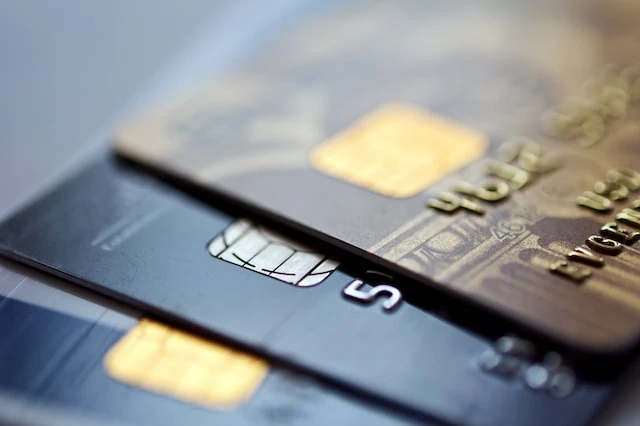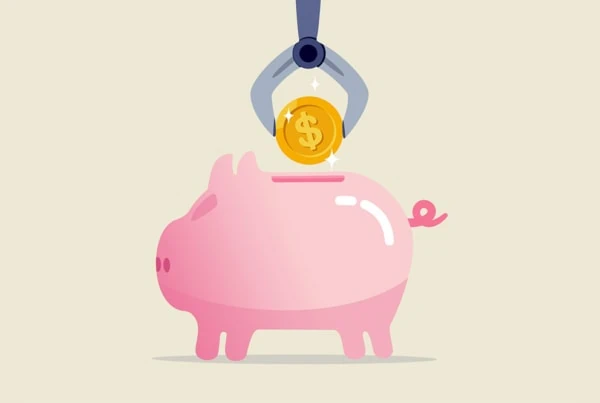There’s an adage in business: it takes money to make money. So, too, is it true in the world of credit: to build credit, you need at least some credit to get credit and build it.
This poses a challenge for those without any credit history: lenders look at your credit history to determine your creditworthiness before issuing you a line of credit, auto loan, or another form of financing.
But this begs the question: how do you get credit when you have none?
This is where unsecured credit cards can make a difference. Let’s learn about these non-traditional credit card options and how secured credit cards vs. unsecured compare.
Let’s jump in!
Featured Financial Products
What is a Secured Credit Card?
A secured credit card is a type of credit card that requires you to put down an upfront cash deposit, usually equaling the amount of your credit limit.
This cash security deposit helps protect the credit card company from recognizing a loss by issuing you a credit card and then failing to receive payments.
Secured cards typically work best for individuals with no credit or looking to rebuild bad credit.
The cash deposit establishes collateral the credit card issuer may claim in the event of default or failure to make on-time payments.
Related: Best Credit Cards for Teenagers
How Does a Secured Credit Card Work?
Often, secured credit cards work as the first step for young adults or people who don’t have an established credit history to have access to credit. They also work for consumers with poor credit. Secured credit cards work by having the cardholder front a required deposit to open an account, reducing the risk to the credit card issuer of you defaulting or missing a payment.
Usually, minimum deposits are in lower denominations, between $200 to $500 to start. This represents your credit limit and also financial protection for the financial institution issuing the card. Once you apply for a secured credit card and make the security deposit, these secured credit card options work like any other card.
Where they differ from a traditional credit card comes through requiring a cash deposit upfront (usually a refundable security deposit) and often running no credit check as a result. Unsecured credit cards don’t require an initial deposit and usually run a credit check to determine eligibility and whether you are likely to use the card responsibly.
A card company may let applicants get automatically considered if their credit profile carries excellent credit or if they apply for a secured card.
Related: 9 Best Credit Cards for No Credit History [Starter Credit Cards]
What is an Unsecured Credit Card?
An unsecured credit card operates under a different model than a secured credit card.
Unsecured cards, the most common credit card type, often represent what people want when they apply for a new credit card.
Unsecured credit card options rely on expenses hitting a line of credit extended to you in advance.
“Unsecured” means that your debt incurred on the unsecured card doesn’t come backed by collateral—a deposit in the case of secured cards—and relies on a borrower’s credit score.
That means this type of card has a higher risk to lenders because they rely on your credit history and your ability to repay.
Because you make charges against a line of credit on an unsecured card, they often get referred to as “charge cards”.
However, an unsecured credit card, like a secured credit card, still limits how much you can spend through credit card limits.
They also tend to offer users a cash back or rewards program to entice them to open a credit card account.
Related:
- What is Credit Card Piggybacking & Does It Help Credit Scores?
- Will Authorized User Status Help Build Your Credit Score?
How Do Unsecured Credit Cards Work?
Unsecured credit cards represent a standard financial product available through banks, credit unions and other service providers.
They work by providing you with a revolving line of credit, meaning you can spend up to an approved amount without making a payment within a monthly billing cycle.
You can pay off the card in full each monthly billing cycle or you can revolve it to the next month and incur interest on any unpaid balance.
You can make the minimum monthly payment or choose another amount between this and the entire amount due.
Because credit cards carry some of the highest interest rates of any form of credit available, paying off your balance each monthly billing cycle can save you significant amounts of money over time.
Plus, it instills a habit of building a good payment history and, eventually, a good credit score.
Because of the ubiquity of these cards, establishing good money habits pays off significantly through avoided interest expense.
You don’t need to look too far to find a credit card through any company remotely related to finance.
Because of this, getting an unsecured card requires you to apply with the financial institution by supplying your personal information and often consenting to a pull on your credit score from the major credit bureaus.
Not all card companies require this, but many do.
If the company approves your application, they will provide you with an unsecured credit card to use in various locations, both online and off.
Related: Best Credit Cards for Kids: Building Credit & Money Habits Early
Featured Financial Products
Secured Credit Card vs. Unsecured Credit Card
The key differences between secured credit cards vs. unsecured cards come down to:
- the upfront deposit you must pay to open a secured credit card
- rewards program offerings
- annual fee options and
- available credit limits.
Upfront Deposits
A secured credit card operates under a collateral-based system, meaning you make an upfront security deposit, de-risking your account for credit card issuers. The deposit represents your credit card limit.
If you fail to make payments, the credit card issuer can claim your security deposit to satisfy any unpaid balance on your account.
An unsecured card doesn’t have this requirement, instead relying on your credit scores provided by the major credit bureaus to identify your creditworthiness.
If the lender thinks you represent a credit risk—meaning you have no credit or a poor credit score (under 580) and want to make efforts toward rebuilding credit—they’d prefer to start you with a secured card to limit their risk exposure.
Rewards Programs
Often, a secured credit card doesn’t come with rewards programs. Instead, they focus primarily on building or rebuilding credit.
Unsecured cards tend to offer rewards programs to entice consumers to open an account.
Annual Fee
Annual fees appear for both secured credit cards and unsecured cards. Commonly, these fees will range around $25 – $50 per year, though unsecured cards can have higher fees for premium rewards programs.
Receiving approval for these premium unsecured credit card rewards programs requires at least fair credit—and often good credit history.
Credit Limits
Secured credit cards tend to have a low credit limit compared to unsecured credit cards because they match the initial deposit made upfront.
The maximum amount you can deposit varies on secured credit cards; typically, you don’t see them exceed $2,500.
An unsecured card relies on your creditworthiness to set your credit limit and can have limits that far exceed secured credit cards.
With either card type, if you can add positive payments to your credit history by paying on or before the due date, you can build good or excellent credit across time.
Ensure your credit history is reported to the three main credit bureaus and you maintain a low credit utilization rate.
This shows you don’t need credit to get by, instead to manage expenses inside your budget.
If you can use small amounts of your available credit limit, you will see a higher credit rating on your credit report and possibly access a higher credit line.
Related: Best Credit Cards for Students with No Credit
Secured Credit Card vs. Prepaid Card
Secured credit cards and prepaid debit cards are similar in that they both require money to use the card. However, that deposited money deposited gets used differently.
A prepaid debit card works similarly to a gift card, except you can use it anywhere that accepts debit cards. The money you put on it upfront gets used to pay for charges.
For example, if you loaded a prepaid card with $200 and then bought something for $20, the card would have $180 remaining.
The money you deposit upfront for a secured credit card doesn’t get drawn against, instead only getting used as a security deposit.
If your deposit amounted to $200 and you bought something for $20, you would receive a bill for $20 and any other purchases you made that cycle.
A secured card doesn’t use the security deposit to pay for purchases, only as a means for protecting the credit card company against the risk of default.
As long as you pay all your bills (either on time or with the accumulated interest), you can get your security deposit back on a secured card.
Related: Best Debit Cards for Teens
How Can a Secured Card Help Build Credit and Improve Your Credit Score?
When you turn 18, you become eligible to apply for a credit card in your name, though you’ll need to meet certain age and income requirements.
Though, because you’re so young, you might not have the positive credit history that credit card companies want to see—or any credit history at all.
If this is the case, you might consider applying for a secured credit card to establish credit and make on-time payments while keeping your balance low relative to your overall available credit. Secured cards work best for people with no or bad credit.
You’ll need to make an initial deposit that becomes your credit limit to receive an actual credit card, but you will receive a secured card account in your name to build credit.
With enough time, making on-time payments and maintaining an overall good payment history will show you can use the card responsibly. These good credit and personal finance habits should be reported to major credit bureaus, reflecting on your credit report.
If you make timely payments and keep your balance low over time, this can help build up your credit line and scores.
This especially matters for building credit because showing you can make your monthly payments on time and not overuse your credit demonstrates creditworthiness to credit reporting agencies and credit card issuers.
The security deposit keeps skin in the game for you to make good on payments.
Unlike prepaid cards, the security deposit funds don’t load onto your card and do not get directly used for purchases. Instead, this deposit will be forfeited if you fail to pay your credit card bill.
So, if you make your payments on time, your regular spending activity and collateral will help you to build your credit. To provide you more financial flexibility with time, you may opt to move to unsecured card issuers’ options.
Featured Financial Products
Related:










![Check Out the New 401(k) Contribution Limits for 2026 [Save More for Retirement] 16 number blocks switching from 2025 to 2026.](https://youngandtheinvested.com/wp-content/uploads/2025-to-2026-blue-background-1200-600x403.webp)

![7 Best Microsavings Apps [Save Money, Reach Your Goals] 18 best microsavings apps](https://youngandtheinvested.com/wp-content/uploads/best-microsavings-apps-600x403.webp)
